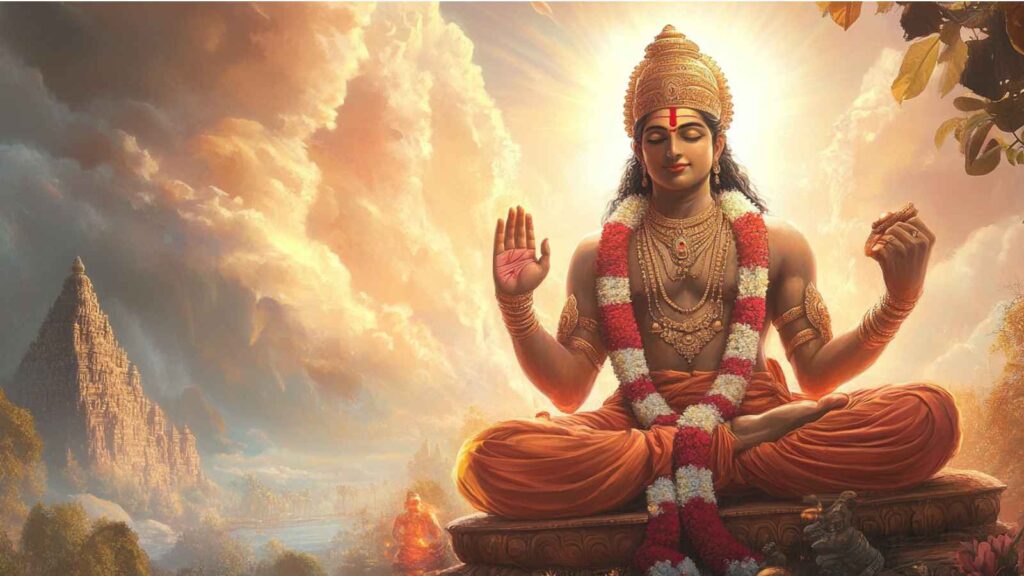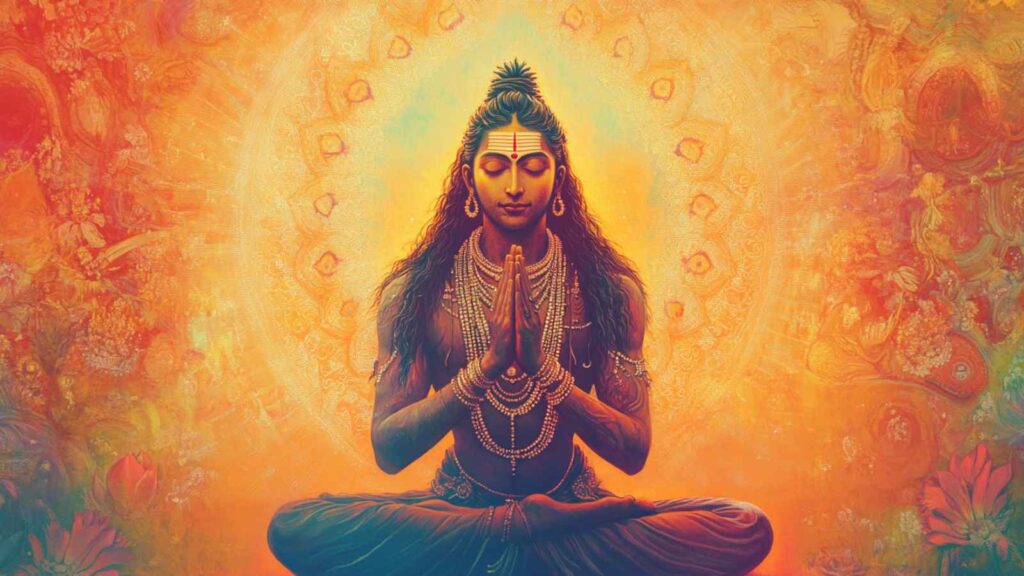Mundaka Upanishad: Higher and Lower Knowledge in Hindu Philosophy
The Mundaka Upanishad is one of the most profound texts in Hindu philosophy, offering timeless insights into the nature of knowledge, wisdom, and the pursuit of spiritual awakening. As part of the Atharvaveda, it deals with fundamental questions about the nature of the self (Atman), the ultimate reality (Brahman), and the distinction between higher and lower knowledge. This Upanishadic text not only outlines two kinds of knowledge but also offers a pathway for individuals to achieve spiritual liberation (moksha) through the realization of the Supreme.
Read More About sacred texts
In this article, we will delve into the teachings of the Mundaka Upanishad, focusing on its differentiation between higher knowledge (Vidya) and lower knowledge (Avidya). These concepts are central to understanding the deeper aspects of Hindu philosophy and the path to enlightenment. By studying this sacred text, we will uncover how these two types of knowledge guide spiritual seekers towards self-realization and liberation.
Introduction to the Mundaka Upanishad
The Mundaka Upanishad is one of the principal Upanishads, and it forms a significant part of the Atharvaveda, a major collection of texts in the Vedic tradition. This Upanishad is renowned for its clear distinctions between different kinds of knowledge and its teachings on how to transcend the limitations of the material world.
The word “Mundaka” comes from the root “Munda”, meaning “the head” or “shaved head.” Some scholars believe that this refers to the ascetic nature of the teachings in the Upanishad, with the shaved head symbolizing renunciation and the pursuit of spiritual wisdom. Others interpret the term as referring to the “root” of the teachings—pointing to the fundamental knowledge of the universe.
The Mundaka Upanishad is structured into three sections, or mundakas, and it presents a dialogue between the sage Angiras and his disciple Shaunaka. Through this dialogue, the text offers spiritual guidance on attaining true knowledge and realizing the ultimate truth of existence.
The Key Themes of the Mundaka Upanishad

The central themes of the Mundaka Upanishad are related to the nature of knowledge, wisdom, and the soul’s journey towards liberation. It emphasizes the importance of Jnana Yoga (the path of knowledge) in understanding the nature of the self and the ultimate reality, Brahman. Let us explore the key teachings of the Mundaka Upanishad, especially its distinction between higher and lower knowledge.
1. The Two Types of Knowledge: Higher and Lower
One of the most important philosophical aspects of the Mundaka Upanishad is its clear distinction between higher knowledge (Vidya) and lower knowledge (Avidya).
- Lower Knowledge (Avidya): This type of knowledge refers to the worldly, materialistic knowledge that pertains to the physical world and its transient phenomena. It includes knowledge that is gained through sensory perception, logic, and reasoning. It is practical knowledge, such as the skills required for daily life, but it does not lead to spiritual liberation. Avidya is associated with the pursuit of pleasures, possessions, and the ego, which ultimately bind the soul to the cycle of samsara (birth and death).
- Higher Knowledge (Vidya): In contrast, higher knowledge refers to spiritual wisdom and insight into the nature of the soul and the universe. It is the realization of Brahman (the ultimate reality) and Atman (the eternal self). The Mundaka Upanishad teaches that only through Vidya can one attain liberation (moksha) and transcend the limitations of the material world. Vidya involves deep meditation, introspection, and a direct experience of the divine truth. It is the knowledge that reveals the interconnectedness of all beings and the oneness of the individual soul with the universal consciousness.
In Mundaka Upanishad, Vidya is symbolized by the knowledge of Brahman, which is essential for self-realization. It is only through higher knowledge that one can experience the ultimate truth and realize that the material world is an illusion (Maya), and only the eternal soul (Atman) is real.
2. The Role of the Guru in the Pursuit of Higher Knowledge
In the Mundaka Upanishad, the role of the guru (spiritual teacher) is crucial in guiding the seeker toward higher knowledge. The text emphasizes the importance of having a qualified teacher who can impart the knowledge of Brahman to the disciple. The guru provides not only theoretical knowledge but also practical guidance on how to meditate, contemplate, and experience the divine reality.
The Upanishad states that the Atman (the individual soul) can only be realized when the seeker is initiated by a true guru. Without the guidance of a realized teacher, the seeker remains lost in the illusions of the material world, bound to Avidya (ignorance). Through the guru-shishya (teacher-student) relationship, the disciple gains the necessary tools for realizing the truth of existence and the nature of the soul.
3. The Symbolism of the Fire and the Sacrifice
The Mundaka Upanishad also uses the symbolism of fire to describe the nature of higher knowledge. It describes the process of spiritual awakening as a sacrifice (yajna), where the material desires and attachments are offered to the fire of wisdom. This symbolism is akin to the ancient Vedic rituals, where offerings are made into the sacred fire to purify the self.
In the Upanishad, fire represents the transformative power of knowledge. Just as fire consumes offerings and transforms them, knowledge burns away the ignorance of the material world, leading the seeker to a higher understanding of reality. This concept is illustrated in one of the famous metaphors in the Upanishad: the fire of knowledge is said to consume the ignorance (Avidya) and reveal the Brahman (divine truth).
4. The Nature of Brahman and Atman
The Mundaka Upanishad teaches that the ultimate reality is Brahman, the infinite, unchanging source of the universe. Brahman is beyond description, beyond the grasp of the senses, and is the essence of all existence. The text explains that the Atman (individual soul) is not separate from Brahman; rather, it is identical to Brahman. This realization is the key to liberation.
Brahman is depicted as both Nirguna (without attributes) and Saguna (with attributes), meaning that while Brahman is beyond form, it also manifests in the material world in different forms. The Mundaka Upanishad emphasizes that meditation and direct experience are the means by which the seeker can realize the oneness of Atman and Brahman.
The Upanishad conveys that the ultimate knowledge is the realization that everything in the universe, from the smallest particle to the vast cosmos, is an expression of Brahman. The individual self (Atman) is merely a reflection of the infinite, eternal Brahman.
The Mundaka Upanishad’s Relevance in Modern Spirituality

The teachings of the Mundaka Upanishad remain highly relevant today, especially in a world that is often caught up in the pursuit of material wealth and worldly knowledge. The text serves as a reminder that spiritual wisdom—the understanding of the true nature of the self and the universe—is the highest form of knowledge. In a modern context, the distinction between higher and lower knowledge can be applied to the growing interest in self-awareness, mindfulness, and meditative practices that lead to self-realization.
The Mundaka Upanishad also emphasizes the importance of spiritual discipline, self-inquiry, and the need for proper guidance from a realized teacher. In an era where distractions abound and materialism often reigns, these teachings provide valuable insight into the path toward inner peace, enlightenment, and freedom from the cycle of birth and death (samsara).
Conclusion: The Eternal Wisdom of the Mundaka Upanishad
The Mundaka Upanishad offers profound wisdom that continues to guide spiritual seekers toward the ultimate realization of Brahman and Atman. Its distinction between higher knowledge (Vidya) and lower knowledge (Avidya) serves as a valuable framework for understanding the nature of existence and the pursuit of self-realization. By studying this sacred text, we are reminded that true wisdom is not found in worldly knowledge, but in the deep understanding of the eternal soul and the infinite reality that transcends time and space.
The Mundaka Upanishad invites us to embark on the path of knowledge and meditation, offering a roadmap to transcend the illusions of the material world and attain liberation through the realization of the self’s oneness with the divine.


